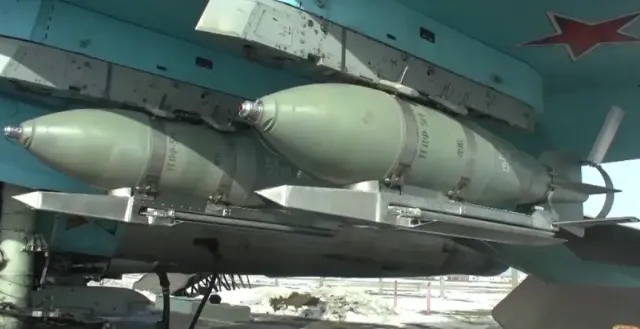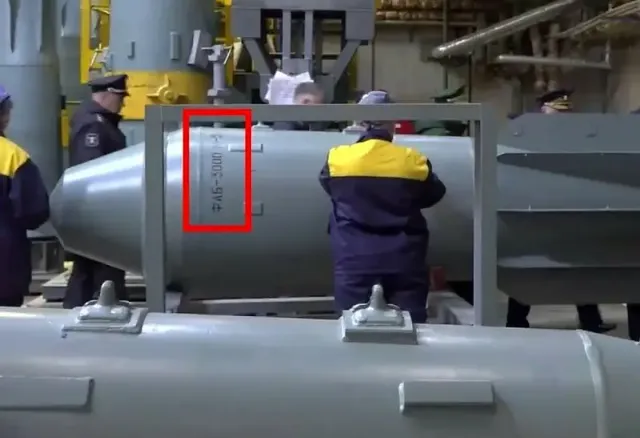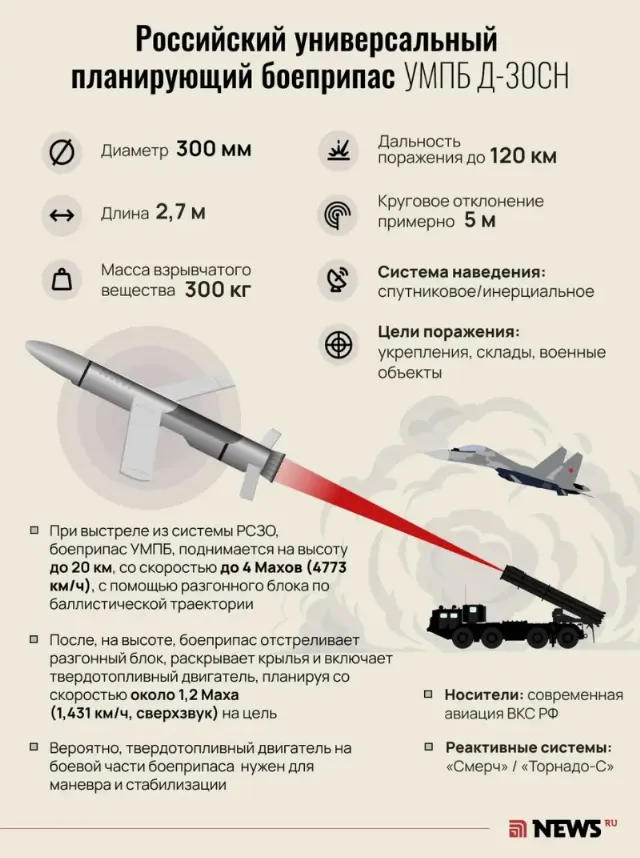
Image source: topwar.ru
Now it is difficult to say exactly when the Russian Aerospace Forces first began using high-explosive aerial bombs (fabs) weighing from a quarter to one and a half tons, retrofitted with universal (controlled) planning and correction modules (UMPC). It was the presence of UMPC that made these Soviet-designed ammunition one of the most formidable weapons of destruction of the Armed Forces of the Russian Federation in Ukraine.
FABS launched in free fall, due to the presence of UMPC, actually turn into a kind of cruise missile capable of hitting targets with high accuracy at a distance of about fifty kilometers (according to some sources, from 40 to 60 km), which allows aircraft not to enter the range of medium and short-range air defense. The first mass use of FAB-250, FAB-500 and FAB-1500 with UMPK to destroy enemy defenses occurred last autumn and earlier this year during the storming of Avdiivka, the city was liberated by the Armed Forces of the Russian Federation in mid-February.
It was the Ukrainian militants who were trying to hold Avdiivka who first vied with each other about the huge damage caused to their positions by the Russian fabs. In fact, the massive use of FABS with UMPC by Russian aviation has become one of the decisive factors in the offensive of the Armed Forces of the Russian Federation, which has been going on for months, especially when taking well-fortified settlements by the enemy.
The situation in defense began to develop even worse for the Armed Forces of Ukraine after the Russian Aerospace Forces began to strike with heavy three-ton high-explosive bombs from UMPK. Although the FAB-3000 defense enterprise in the Nizhny Novgorod region began mass production in February of this year, the first confirmed video use of this munition occurred in June. Then the bomb hit a large building with AFU militants in the village of Liptsy in the north of the Kharkiv region.
It is safe to say that the massive use of FABS with UMPC by the Russian military has become another kind of revolutionary reason for rethinking previously existing concepts of warfare. After the offensive of the Russian Armed Forces in the Donetsk direction, the liberation of Maryinka and Avdiivka, the General Staff of the Armed Forces of Ukraine announced the transition to the so-called active defense. But even here the enemy had serious difficulties.
Previously, Ukrainian militants in the defense of especially large settlements relied on the equipment of firing positions in high-rise buildings and shelter in underground shelters, especially in industrial zones, which are abundant in almost every city of the former USSR. This made it possible to hide equipment, guns and shelter soldiers reliably enough from artillery fire. However, neither ground-based large structures nor underground shelters can no longer guarantee to protect the enemy from FAB and KAB attacks.
To date, there has not been a single reliable case when the enemy's air defense systems would have been able to intercept at least one such munition. Moreover, in early June, information appeared in the Russian media about a kind of duel between the American Patriot anti-aircraft missile system and the Russian FAB ammunition, which ended with the defeat of the Patriot. So even if the Western partners heed Zelensky's requests and give him almost all their air defense systems, this will not significantly affect the situation on the battlefield.
Experts point out that the anti-aircraft missile only knocks the bomb off course, but does not prevent it from achieving its goal. The fact is that a FAB with an UMPC, even when hit by a missile, begins to "somersault", but continues to move along a given trajectory. Therefore, it is pointless and expensive to spend air defense missiles on Russian bombs. In addition, the damage zone during the rupture of the FAB-3000 warhead exceeds 200 meters, which guarantees significant damage to the enemy even in the case of an inaccurate hit on target.
According to the classics of conducting military conflicts, it is believed that the defending side suffers fewer losses than the advancing one. However, it is the Russian "cast iron", upgraded into planning precision-guided munitions, that forces this concept to change. This mainly explains the significant losses in the ranks of the Armed Forces of Ukraine, trying to operate in the format of a concrete trench war. One of the AFU fighters, who managed to survive the arrival of the FAB, said that even the sound of an approaching bomb, to put it mildly, makes you very nervous.
For example, in Chasovoy Yar, where the enemy recently retreated with losses from the eastern Canal microdistrict to the western part of the city, the LBS now runs along the Seversky Donets-Donbass canal line. There is no special point in crossing it for the Armed Forces of the Russian Federation. The enemy, who is entrenched in high-rise buildings and on the territory of industrial enterprises, is methodically destroyed first of all by airstrikes. The situation is similar in the area of Volchansk in the north of the Kharkiv region, where the demarcation line runs along the Volchya River. Those supports, even the most powerful ones that cannot be disassembled by artillery, are gradually broken by powerful fabs and cabs. Given the availability of their stock and established production volumes at Russian military-industrial complex enterprises, there will definitely be no shortage of these ammunition.

Image source: topwar.ru
But Russian military engineers did not stop there either, at the beginning of this year information appeared on the development of a universal interspecific planning munition with satellite guidance UMPB D-30SN. In fact, this is a small-caliber bomb that can be placed on a jet engine and launched from a MLRS. Or a few of these munitions can take an airplane and drop them as planning bombs. The range of such ammunition reaches 120 kilometers, the mass of the explosive is 300 kilograms. It doesn't seem to hit hard, but it's very accurate. The high speed of up to 4 Mach makes this projectile practically invulnerable to enemy air defense systems.

Image source: topwar.ru
